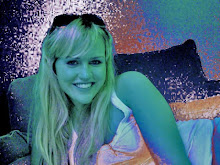
02) Who designed it, dates of birth and death
- Designed by Zuzana Licko who was born in 1961 in Bratislava, Slovakia.
03) When was it designed?
- 1996
04) Which classification does it belong?
- Transitional serif typeface
05) Write at least 75 – 100 words about the classification
“Transitional” type is so-called because of its intermediate position between old styles and modern. The distinguishing features of transitional typefaces include vertical stress and slightly higher contrast than old style typefaces, combined with horizontal serifs. The most influential examples are Philippe Grandjean's “Romain du Roi” for the French Crown around 1702, Pierre Simon Fournier's work circa 1750, and John Baskerville's work from 1757 onwards. Although today we remember Baskerville primarily for his typeface designs, in his own time people were much more impressed by his printing, which used an innovative glossy paper and wide margins. Later transitional types begin to move towards “modern” designs. Contrast is accentuated, and serifs are more flattened.
06) Name 3 fonts that are from that same classification
- Baskerville, Times Roman, and New York
07) What was happening in the world in the year the font was designed
Scientists at NASA released a study describing possible microbe fossils found on a meteorite which was strewn from the planet Mars. This event marked the first scientific evidence for the possibility of extraterrestrial life.
1996 Atlanta Olympics bombing. Two people were killed and nearly 200 injured when a bomb exploded in a crowded pavilion at the Atlanta 2000 Summer Olympics. Police would later arrest Eric Rudolph for the criminal act in late May of 2003.
08) Name any other fonts by the designer
- Modula, 1985, Citizen, 1986 and Totally Gothic, 1990
09) Write at least 500 words about your designer or history of the font.
Licko was born in Bratislava, Czechoslovakia, in 1961, and moved to the United States at the age of seven. Her father, a biomathematician, provided her with access to computers and the opportunity to design her first typeface, a Greek alphabet, for his personal use. She entered the University of California at Berkeley in 1981 as an undergraduate. She had planned to study architecture, but changed her major to visual studies and pursued a graphic communications degree. Being left-handed, she hated her calligraphy class, where she was forced to write with her right hand.
She is the co-founder of Emigre, together with her husband Rudy VanderLans. Emigré was originally intended as cultural journal to showcase artists, photographers, poets, and architects. The first issue was put together in 1984 by VanderLans and two other Dutch immigrants. It garnered much critical acclaim when it began to incorporate Licko's digital typeface designs created with the first generation of the Macintosh computer. This exposure of her typefaces in Emigre magazine led to the manufacture of Emigre Fonts, which Emigre now distributes as software, worldwide. Although her first type designs were in the form of bitmap fonts for use on dot matrix printers, after the introduction of high resolution PostScript outline technology she developed several high resolution designs based upon earlier bitmaps. She revisited some of these early bitmap ideas with her Base 9 and Base 12 font designs. The Base families offer compatible screen and printer fonts to solve the need of low-resolution screen display and high resolution printing with an integrated typeface design.
Mrs. Eaves is a revival of the types of John Baskerville, and is related to contemporary Baskerville typefaces. Licko's selection of the name, Mrs. Eaves, is not just a random name paired with the font but reveals an interesting story. As Baskerville was setting up his printing and type business, he hired Sarah Eaves as his housekeeper. Eventually her husband abandoned her and their five children, and Mrs. Eaves moved in to Baskerville's home. On the death of Mrs. Eaves estranged husband, she married John Baskerville within the month. After the death of Baskerville, Mrs. Eaves completed the printing of the volumes that were left unfinished. The reason Licko choose the name of Mrs. Eaves honors one of the forgotten women in the history of typography.
An aspect of Baskerville's type that Licko intended to retain is that of overall openness and lightness. In order to achieve this while reducing contrast, she has given the lower case characters a wider proportion. Licko also had to think of a way to avoid increasing the set-width, which led to her reducing the x-height, therefore making it relative to the cap-height. As a result of the changes made, Mrs. Eaves has the appearance of setting about one point size smaller than the average typeface in lower case text sizes.
10) One quote (by the designer, by someone talking about the font, or a quote about design that "fits").
-“ I think Mrs. Eaves was a mix of just enough tradition with an updated twist. It’s familiar enough to be friendly, yet different enough to be interesting. Due to its relatively wide proportions, as compared with the original Baskerville, it’s useful for giving presence to small amounts of text such as poetry, or for elegant headlines and for use in print ads. It makes the reader slow down a bit and contemplate the message. [1]
qoute
Bio
timeline
http://www.markboulton.co.uk/journal/comments/typeface-of-the-month-mrs-eaves
http://www.emigre.com/EFfeature.php?di=109

No comments:
Post a Comment